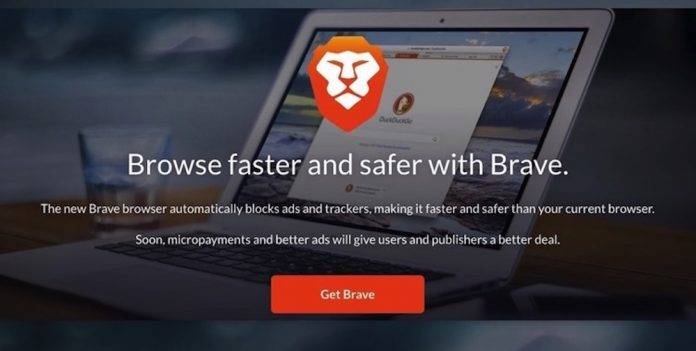What is cybersecurity?
In simplest terms, cybersecurity is the practice of protecting systems, networks, and programs from digital attacks.
These cyber-attacks are usually aimed at accessing, changing or destroying sensitive information, extorting money from users or interrupting normal business processes. Implementing effective cybersecurity measures is particularly challenging today because there are more devices than people, and attackers are becoming more innovative.

Cyberattacks
Talking about cyberattacks, they are a malicious and deliberate attempt by an individual or organization to breach the information system of another individual or organization. Usually, the attacker seeks some type of benefit from disrupting the victim’s network.
Cyberattacks might hit an individual’s personal network or businesses, whether they be small scale or large scale. The frequency of cyberattacks has increased manifold in the last 2 years and is expected to increase further every consecutive year. A cybercrime might be committed with ulterior motives as well, and such a practice has even been given a name called ‘Hacktivism’.

What is BOTNET?
A botnet is a network of devices that have been infected with malicious software, such as a virus. Attackers can control a botnet as a group without the owner’s knowledge with the goal of increasing the magnitude of their attacks. A botnet is used to overwhelm systems in a distributed-denial-of-service attack (DDoS) attack.

TYPES OF CYBER ATTACKS
1. Phishing
Phishing is commonly known as ‘Identity Theft’. It is the practice of sending fraudulent communications that appear to come from a reputable source, usually through email. The goal is to steal sensitive data like credit card and login information or to install malware on the victim’s machine.
Read more about phishing here: http://www.phishing.org/phishing-and-identity-theft

2. Malware
Malware is a type of software designed to gain unauthorized access or to cause damage to a computer. Malware breaches a network through a vulnerability, typically when a user clicks a dangerous link or email attachment that then installs risky software. Once inside the system, malware can do the following:
- Install additional harmful software on the machine
- Obtain information by transmitting data from the hard drive
- Disrupt certain components and render the system inoperable

3. Ransomware
Ransomware is a type of malicious software designed to extort money by blocking access to files or the computer system until the ransom is paid. Paying the ransom does not guarantee that the files will be recovered or the system will be restored.

4. Denial-of-Service Attack (DoS)
A denial-of-service attack floods systems, servers, or networks with traffic to exhaust resources and bandwidth. As a result, the system is unable to fulfill legitimate requests. Attackers can also use multiple compromised devices to launch this attack. This is known as a distributed-denial-of-service (DDoS) attack.
Learn more about DoS here: https://www.webopedia.com/TERM/D/DDoS_attack.html

5. Hacking (DDoS, Key Logging, Cookie Theft)
The one word that gets thrown around far too often when discussing cyber threats is hacking, however, it tends to lose its impact and the true nature of it becomes blurred.
Hacking is differentiated into three types:
- White Hat: The ethical one
- Black Hat: The unethical one
- Hacktivism: “Thinks they’re doing good” kind but the intent is usually wrong

6. Man-in-the-Middle Attack (MitM)
Man-in-the-middle (MitM) attacks, also known as eavesdropping attacks, occur when attackers insert themselves into a two-party transaction. Once the attackers interrupt the traffic, they can filter and steal data.
On unsecured public Wi-Fi, attackers can insert themselves between a visitor’s device and the network. Without knowing, the visitor passes all information through the attacker. Once the malware has breached a device, an attacker can install software to process all of the victim’s information.

7. SQL Injection
A Structured Query Language (SQL) injection occurs when an attacker inserts malicious code into a server that uses SQL and forces the server to reveal information it normally would not. An attacker could carry out a SQL injection simply by submitting malicious code into a vulnerable website search box.

A successful cybersecurity approach has multiple layers of protection spread across the computer networks, programs, or data that one intends to keep safe. In an organization, the people, processes, and technology must all complement one another to create an effective defense from cyberattacks.
Technology is essential to giving organizations and individuals the computer security tools needed to protect themselves from cyberattacks. Three main entities must be protected: endpoint devices like computers, smart devices, and routers; networks; and the cloud. Common technology used to protect these entities include next-generation firewalls, DNS filtering, malware protection, antivirus software, and email security solutions.
CYBERSECURITY MEASURES
Potential businesses can take measures to safeguard their information from attackers. Being a victim to cybercrime can be prevented following these cost-effective strategies:
1. Enforce the use of complex passwords
Whether it is the answers to security questions or the passwords, make sure you create complex ones to make it difficult for hackers to crack them. For answers to security questions, consider translating them into another language using free online translations tools. This may make them unpredictable and difficult to decipher, and less susceptible to social engineering.
Using space before and/or after your passwords is also a good idea to throw the hacker off. That way, even if you write your password down, it would be safe as only you would know that it also needs a space at the front and end. Using a combination of upper and lower cases also helps, apart from using alphanumeric characters and symbols.

2. Use Firewall
In addition to the standard external firewall, many companies are starting to install internal firewalls to provide additional protection. It’s also important that employees working from home install a firewall on their home network as well. Consider providing firewall software and support for home networks to ensure compliance.
It can stop hackers from attacking your network by blocking certain websites. It can also be programmed so that sending out proprietary data and confidential emails from your company’s network are restricted.

3. Install Antivirus
A reliable antivirus program is a basic must-have of any cybersecurity system. Apart from that, anti-malware software is also essential. They work as the final frontier for defending unwanted attacks, should they get through your security network.
They work by detecting and removing viruses and malware, adware and spyware. They also scan through and filter out potentially harmful downloads and emails.

4. Use Multi-Factor Authentication (MFA)
Multi-Factor Authentication helps you protect sensitive data by adding an extra layer of security, leaving malicious actors with almost no chance to log in as if they were you. Even if a malicious actor had your password, they would still need your second and maybe third “factor” of authentication, such as a security token, your mobile phone, your fingerprint, or your voice. As an added benefit, MFA also allows you to clearly distinguish among users of shared accounts, improving your access control.

5. Make a backup of your data
Every week, either back up your data to an external hard drive or the cloud yourself, or schedule automated backups to ensure that your information is stored safely. That way, even if your systems are compromised, you still have your information safe with you.

6. Limit access to critical data
Granting new employees all privileges by default allows them to access sensitive data even if they don’t necessarily need to. Such an approach increases the risk of insider threats and allows hackers to get access to sensitive data as soon as any of your employee accounts is compromised.
In other words, assign each new account the fewest privileges possible and escalate privileges if necessary. And when access to sensitive data is no longer needed, all corresponding privileges should be immediately revoked.

CYBERSECURITY: NEED OF THE HOUR
In today’s world, everyone benefits from advanced cyber defense programs. At an individual level, a cybersecurity attack can result in everything from identity theft, to extortion attempts, to the loss of important data like family photos. Everyone relies on critical infrastructures like power plants, hospitals, and financial service companies. Securing these and other organizations is essential to keeping our society functioning.
With new attacks being reported every other day, following best practices and developing your organization’s overall understanding of the risks posed you can find yourself in a much more secure position. There is no way to completely ensure your system is impenetrable but you can make you or your company less of a target by following the simple cybersecurity measures.


























































